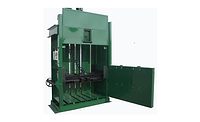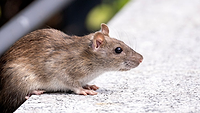The 2011 Food Safety Modernization Act (FSMA) aims to prevent contamination of human foods through risk analysis and mitigation strategies. FSMA’s Preventive Controls for Human Food rule significantly affects pest management practices at food distribution centers (DCs) by calling for proactive programs that prevent pest problems before they arise.
Currently, rodent management programs at many DCs are based on third-party auditor ‘guidelines.’ Using these templates, rodent stations are placed at 50–100 ft. intervals along exterior perimeter walls, and mousetraps are placed every 20–40 ft. along interior perimeter walls. These templates, however, are not based on rodent biology, have not been scientifically tested and may not improve the chance of intercepting a rodent. This is because rodents move in complex ways as they forage for food and water inside buildings. Therefore, portions of equipment installed via ‘yardstick templates’ may be ineffective if they are placed in areas where rodents are not active. Such devices may contribute to higher material costs (stations/bait) and service costs (time to visit stations).
Testing Predictions
In November 2016, researchers from the New York State Integrated Pest Management Program at Cornell University and industry expert Dr. Bobby Corrigan received funding to examine rodent management practices at food distribution centers in New York. This 3-year project will evaluate pest activity at devices placed in rodent vulnerable areas, compared to equipment installed according to simple, linear, yardstick templates.
The results of this real-world project can improve compliance of food DCs to the new FSMA regulations and demonstrate the effectiveness of preventative rodent control. These results may be extended to food manufacturing plants and food retail outlets that face the same challenges as distribution centers.
The Biggest Challenge
Pest professionals, quality assurance managers and operations personnel agree that this research is needed to advance the U.S. Food and Drug Adminsitration’s food safety goals. Nevertheless, researchers have struggled to find study sites that meet two important criteria: Sites must have some level of rodent activity and be located in the Hudson Valley, Long Island or New York City. According to a recent paper by Parsons and others in the Journal of Urban Ecology,[1] access to study sites is a common problem for rodent research. The authors explain that although rodents are pests of significant health risk to humans and that studies on their biology and management are critical, interest in rodent management research is historically lacking.
The authors claim that part of the problem is a conflict between the goals of pest management professionals and researchers. Whereas pest management professionals are hired to quickly and efficiently eliminate rodents, researchers require active populations that can be studied in their natural habitat to better understand rodent biology and behavior. Indeed, these studies are needed to develop more efficient control options that directly benefit the pest management industry.
Call for Collaboration
Pest management professionals, facility/operations personnel and quality assurance managers represent an important link between private organizations and researchers. They can facilitate communication about project details, and more important, understand the benefits that research offers for improving their operation in terms of efficiency, safety and perhaps financially. With this in mind, we are making a call for collaborators to participate in research focused in the Hudson Valley, Long Island and New York City. Features of this research include:
• Anonymity of sites and corporations. All identifying information is kept confidential at all times. Our goal is to study the system, not individual sites. No names of entities, organizations or locations will be used in reports.
• Publicity for PMPs (if desired). According to Parsons et al.,[1] participation in rodent research was beneficial for their collaborating pest management company. Arrow Exterminating Company, Inc. (Lynbrook, NY) was elevated through promotion of research publications and presentations, identifying the company as being forward-thinking and involved in novel approaches to pest management. Indeed, the company moved up in search engine results, making them easier for future clients to find.[1]
• Low investment, high return. For this project, we are requesting access to sites and historical trap catch data from pest professionals. In return, we will conduct regular evaluations of the site and provide free inspection reports to site management. We will create facility maps if they are not already available and offer suggestions about monitoring programs where needed. We will help develop management plans for long-term pest problems, and as industry professionals, will offer expertise to participating pest professionals and site management that would normally come at a high price.
Matt Frye, Ph.D., is an educator and researcher at the New York State Integrated Pest Management Program at Cornell University. For questions or to express interest in participating, please contact him at mjf267@cornell.edu or 914.285.4633.
Reference
1. academic.oup.com/jue/article-lookup/doi/10.1093/jue/jux005.
Rodent Research at Food Distribution Centers: A Call for Collaboration




